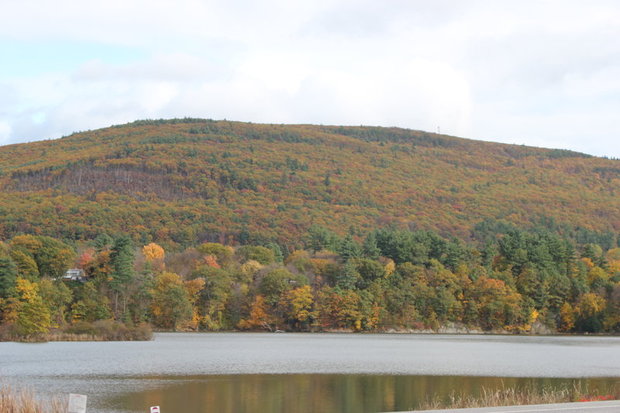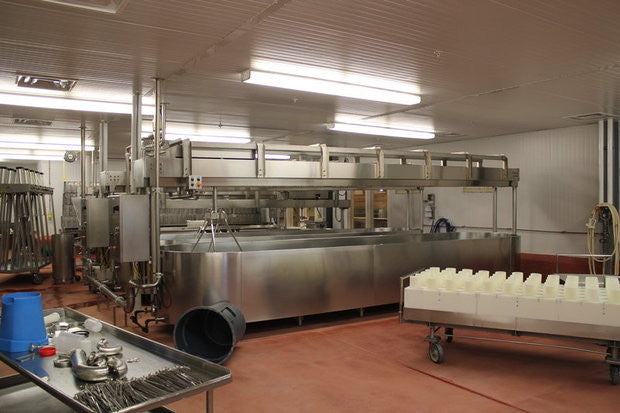
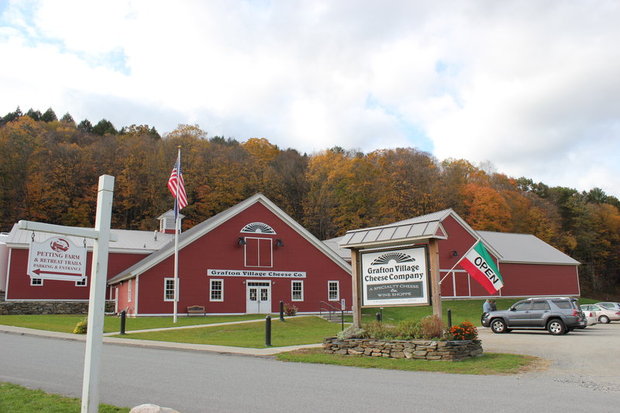 Grafton Village Creamery and Storefront
Grafton Village Creamery and Storefront
Weekend of Cheese
We’re up in Vermont for a three-day, cheese-filled weekend, who could ask for more?
Sweetbreads is attending a cheesemaking workshop with Peter Dixon, the man behind Consider Bardwell's glorious cheeses, and consultant to many others. Saturday through Monday, Sweetbreads' sessions are 9am to 4pm, and about an hour and half from where her Mom lives, so that means I end up spending a fair amount of time in the parking lot writing blog posts and catching up on stuff. It also means I have plenty of time to visit local creameries. I don't know who got the better end of the stick, but it's all about cheese and we're loving it.
On Saturday I visited Grafton Village Cheese (Part One) and Sunday I headed over to Taylor Farm (soon to be Part Two). Vermont cheesemakers in general are a really kind and supportive group of people and we’ve been fortunate enough to visit a number of different creameries in the area. We love VT. It's such a fantastic community for local farmers and artisans of all kinds, hopefully it's something that will be replicated throughout the country.
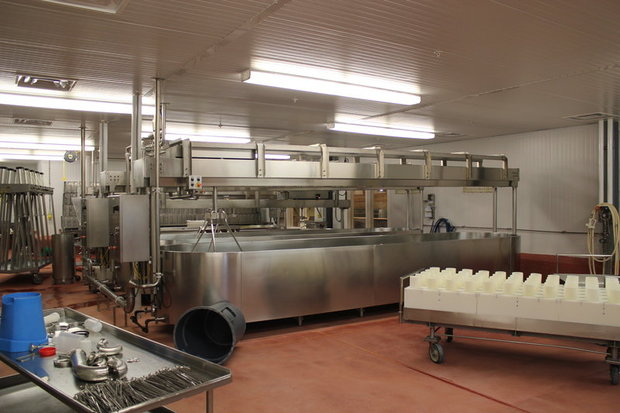 Vats, molds and pneumatic presses
Vats, molds and pneumatic presses
Grafton Village Cheese
Grafton is a unique creamery. It's owned by a non-profit, The Windham Foundation, but it is a for-profit business. Part of the cheesemaking operation's profits get distributed back to Windham. Windham's mission is to support and promote Vermont's rural communities. Based on my visit of Grafton's facility it seems to be doing a pretty good job at accomplishing Windham's mission!
Grafton has two cheesemaking facilities. The original facility in Grafton, VT and the new facility in Brattleboro, VT. I visited the location in Brattleboro. In total Grafton produces over a million pounds of cheese per year. Wow! It's by far the largest creamery we've visited, but it's still a tiny cheese producer relative to the big guys. To put it in perspective, we're hoping to be in the area of 10 to 15 thousand pounds of cheese per year, or about 10-15% of the size of Grafton. Despite the size differential I still learned a lot from the visit and I couldn't have felt more welcome on the visit.
One of my key takeaways from the visit was from a procedural standpoint. Most of the farms we've visited are very, very small-scale. Efficiency is important, but it's not exactly paramount. Seeing a highly efficient, larger-scale facility was interesting. Efficiency matters a lot more when you have lots of employees and bigger production targets. At a million pounds of cheese per year (and probably millions of dollars invested) there's a lot at stake. While we don't aspire to achieve that scale we still care about being efficient, so understanding Grafton's flow and operational procedures was a big help.
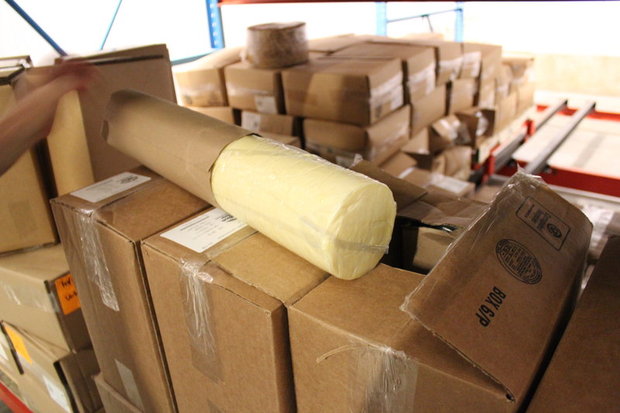 Cheddar vacuum packed and ready to age. See you in five years buddy.
Cheddar vacuum packed and ready to age. See you in five years buddy.
To make cheese, you need milk
One of the reasons why I was interested in visiting Grafton is because Grafton buys in all of its milk. Most consumers don't think about this (I know I never did), but a lot of cheesemakers don't actually own the animals that produce the milk. The milk comes from elsewhere. In Grafton's case it's coming from about 23 dairies all over the state of VT. The benefit of this type of model is that the cheesemakers don't have to operate the animal husbandry side of the business. Also, milk production is lower margin, so the cheesemaker can focus on the higher margin business of making cheese and outsource the lower margin business of milk production to other farmers. The downside is that they don't have the enjoyment of animals or the bucolic vision that constitutes the minds of people everywhere. They also don't always have control of their supply or the price at which they're buying.
For the beginning cheesemaker (aka us) deciding whether to buy-in milk or produce your own milk is a big decision. Longer term we'd like to have our own herd. That's more of a homesteader's decision. It fits with the vision of our farm. In the near-term, however, it might not be possible (it costs a lot to build a milking parlor and buy dairy animals), so buying in milk might be a good way to start. We're sorting that stuff out now, so seeing Grafton was great, and, like I said, you won't find better people (or better cheddar).

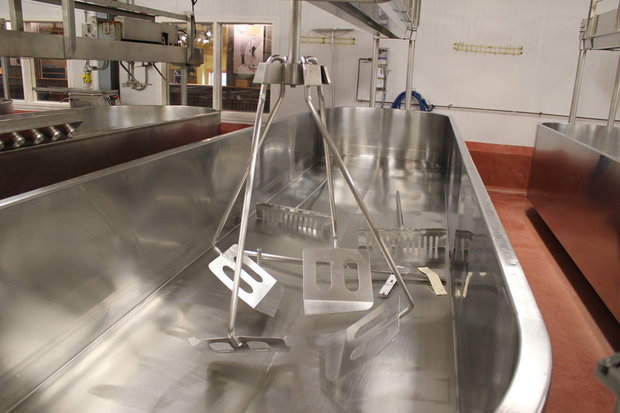 This vat may or may not be bigger than our apartment
This vat may or may not be bigger than our apartment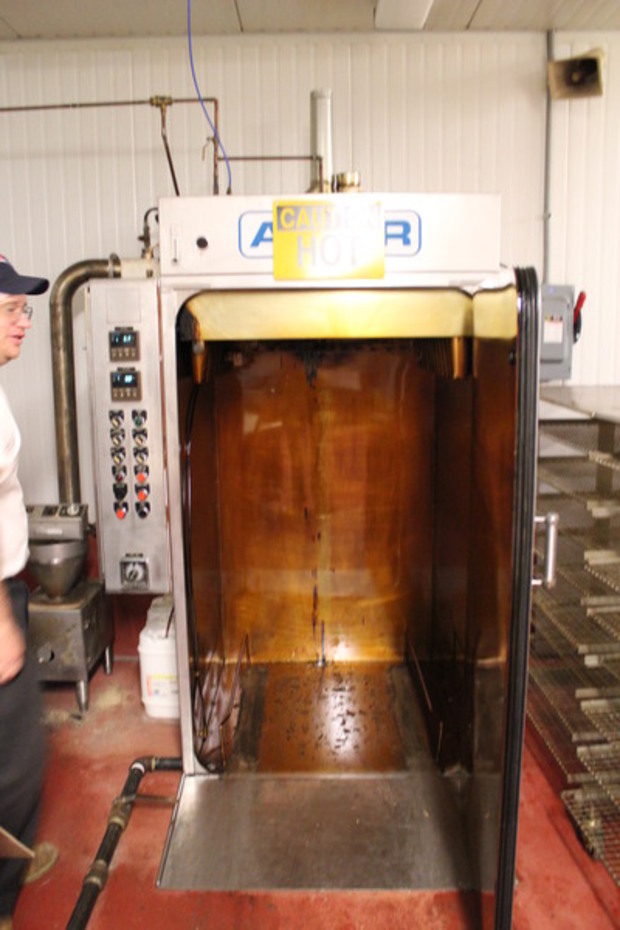 Cheese smoker. We love smoked cheese. Grafton uses Maple wood chips, yum.
Cheese smoker. We love smoked cheese. Grafton uses Maple wood chips, yum.
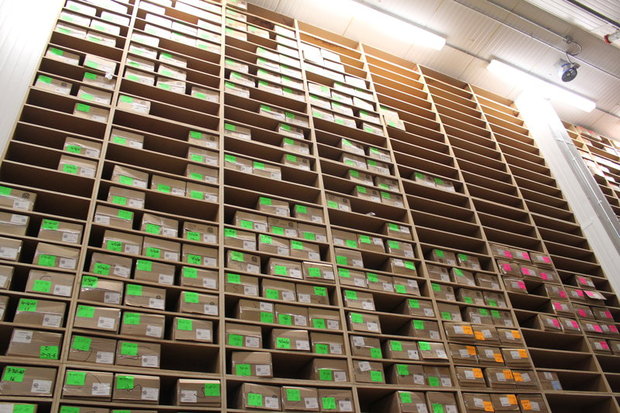 Wall of cheese samples. Before each batch of cheese is sold it must be sampled.
Wall of cheese samples. Before each batch of cheese is sold it must be sampled.


